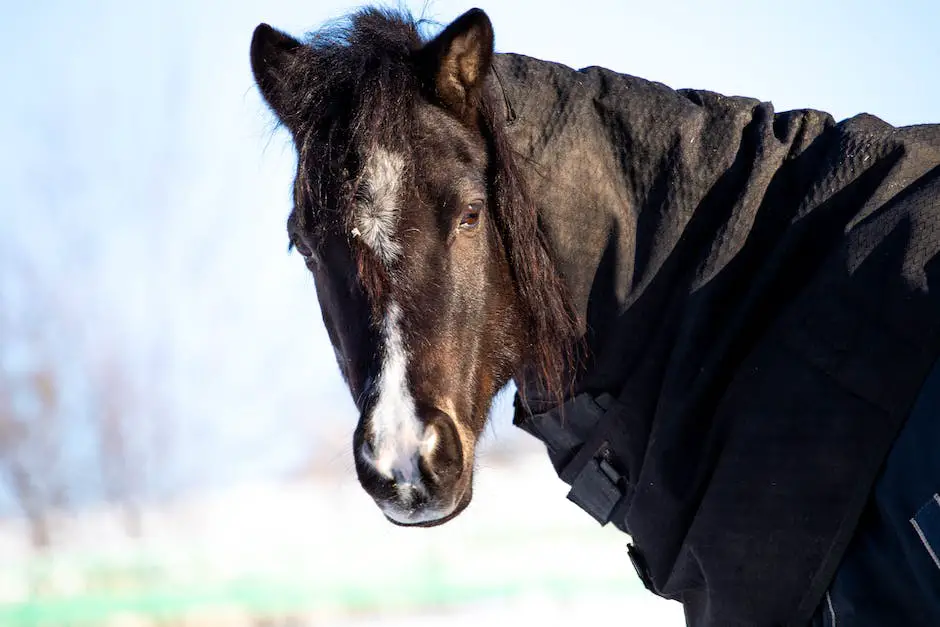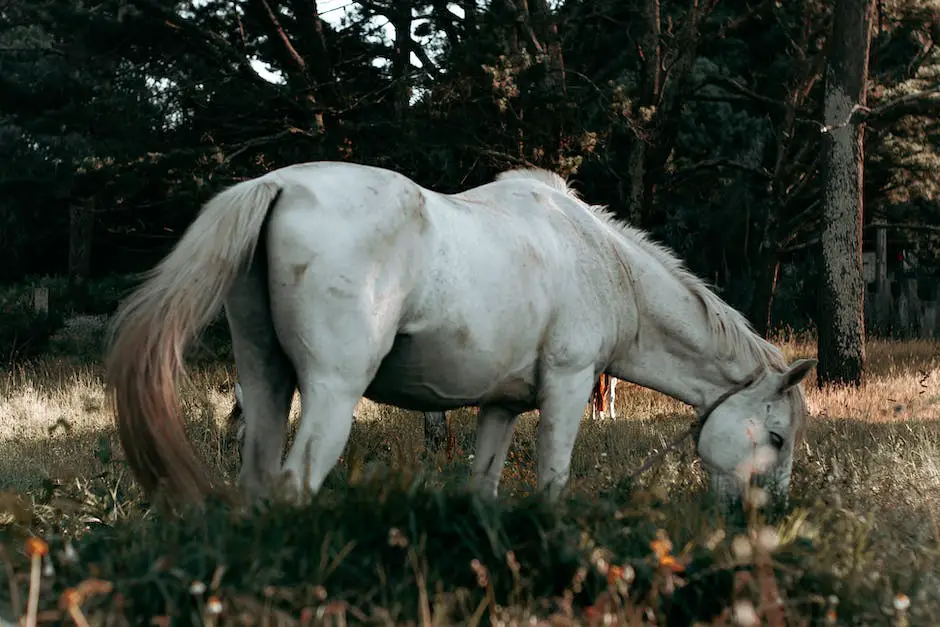The Southern German Coldblood, a highly impressive and versatile horse breed hailing from the beautiful landscapes of Bavaria, has an intriguing history and a collection of features that set it apart from other breeds. Initially developed in the early 20th century, these striking horses were selectively bred for characteristics that rendered them invaluable assets in agricultural work. Delving into their physical attributes, such as color and size, as well as unique genetic traits, gives an even more profound understanding of what makes this breed so unique. Further, by exploring their behavior and temperament, one discovers a breed marked by compassion, intelligence, and immense patience – characteristics that solidify their reputation as excellent heavy-duty workhorses.
Table of Contents (Horspedia)
History and Origin of the Southern German Coldblood
History and Origin of the Southern German Coldblood
The Southern German Coldblood horse breed traces its roots back to Bavaria during the early 20th century. This breed was specifically created to serve as robust and reliable working horses in the agricultural sector. The development of this breed was primarily driven by cross-breeding local Bavarian horses with heavy draft horses imported from neighboring Belgium and Netherlands.
Selective Breeding and Modern Instances
In modern instances, the selective breeding of Southern German Coldblood horses has continued, helping these horses evolve and adapt to contemporary farming needs. Today’s Southern German Coldbloods still embody traits desired in draft horses, including robust health, ample muscle mass, and a gentle temperament. Their compact size and solid build differentiates them from other coldblood breeds like the Rhinelander or Schleswig, making them much more suitable for hilly regions.
The Southern German Coldblood: A Pillar of Bavarian Culture
An integral part of Bavarian culture, the Southern German Coldblood horses are renowned for their royal lineage, having been favored by Bavarian royalty owing to their strength and durability. Their distinctive characteristics of mild temperament, obedience, and hardiness have made them suitable for various activities such as therapeutic riding programs, carriage driving, and horse shows.
Due to declining numbers, steps have been taken to maintain their breed standard and to guard against their possible endangerment. Deeply rooted in the history of Bavaria, the Southern German Coldblood invariably symbolizes strength, resilience, and reliability- traits that aptly mirror Bavarian heritage.

Physical Characteristics and Genetic Traits of the Southern German Coldblood
Distinctive Physical Traits of the Southern German Coldblood
The Southern German Coldblood, a prominent horse breed, is easily identified by its unique physical attributes. Its substantial size sets it apart from other breeds and reinforces its classification as one of the larger coldblood types. Usually standing at 15.2 to 16.1 hands high (roughly 62 to 65 inches from the ground to the withers), they dwarf a lot of their equine counterparts.
As one might expect, their weight aligns with their physical size. Southern German Coldbloods typically weigh between 1,500 to 2,200 pounds. They display a robust physique, characterized by a large, broad head and a muscular, compact body complemented by solid, sturdy legs. Despite their bulk, they possess notable pulling power and agility.
Their coats exhibit a myriad of colors from chestnut, bay, black, grey to roan, providing them with another distinct trait. A point of interest is their dense mane and tail, which offer a level of cold-resistance, a fitting characteristic given their coldblood ancestry.
Genetic Traits of the Southern German Coldblood
The Southern German Coldblood’s distinct physical characteristics result from selective breeding and unique inherited genetic traits. Their lineage traces back to hefty draft horses native to southern Germany, particularly the regions of Bavaria and Baden-Württemberg. The genetic influence of these coldblood draft horses is apparent in the breed’s large size, stamina, and adaptability to cold climates.
One notable trait rooted in their genetics is their prodigious pulling power, a legacy from their draft horse ancestors. Their substantial size and muscular build enhance their strength, making this breed a preferred choice for intensive labor and hauling tasks.
Even their vibrant coat color variations are genetically determined. Arraying from chestnut to bay, black, and roan, these color distinctions result from diverse gene combinations that affect horse coat color. Each Southern German Coldblood could potentially carry multiple color genes.
In essence, the Southern German Coldblood demonstrates a variety of striking physical and genetic traits that set it apart from other breeds. Whether considering its imposing size, diverse color variations, or robust work capabilities, this breed’s features provide a clear testament to its unique genetic legacy and coldblood lineage.

Behaviour and Temperament of the Southern German Coldblood
Behaviour and Temperament of the Southern German Coldblood
Bred in the southern regions of Germany, the Southern German Coldblood is a draught horse commonly used for labor-intensive farm work. Acclimatized to a routine-oriented, strenuous lifestyle, these horses display a tranquil temperament, often keeping their cool in high-pressure situations that could frighten other breeds. This disposition has solidified their position as the top choice for heavy-duty labor in the hilly terrains of Bavaria and other southern German highland areas.
Despite their robust build and daunting size, the Southern German Coldbloods are well-known for their meek, patient nature, which nicely contrasts with their physical prowess. Their cooperative disposition and readiness to follow commands have endeared them to owners.
At first glance, their large size might suggest sluggishness, but on the contrary, the Southern German Coldblood is surprisingly nimble, showcasing a high learning aptitude. Their behavioral traits reveal a breed that quickly masters new tasks and effectively interprets instructions.
Their capacity for learning and memorizing work routines makes them dependable draught horses. This breed exudes a subdued, controlled energy, as opposed to being overly lively– a trait that enhances their ability to perform heavy tasks for long periods without becoming restless or unpredictable.
The Southern German Coldbloods not only exhibit strength but also a notable degree of affection towards their handlers. Their gentle, responsive disposition helps foster strong bonds with their caregivers, enhancing their productivity.
In conclusion, the Southern German Coldblood intertwines tremendous physical capabilities with a calm, steady temperament and innate intelligence. Popular for use in driving and hauling in their homeland, this social breed represents a perfect equilibrium between strength and intelligence. Their serene and responsive demeanor makes them an excellent companion for those in labor-intensive environments, making them a valuable asset to any working farm or ranch.

Uses and Roles of the Southern German Coldblood
The Role of the Southern German Coldblood in Farming
As an essential asset in various types of farm work, the Southern German Coldblood horse breed stands out owing to their lifting capacity, endurance, and weather resilience. From tilling fields, hauling hefty machinery, to transporting harvested crops, there’s no task too big or small for their powerful might and stamina. Therefore, if the job requires long, sustained efforts, the Southern German Coldblood is the breed of choice.
Use in Transportation
Historically, Southern German Coldbloods have played vital roles in both rural and urban transportation. In rural areas, these horses are often used to pull carts and wagons for the transport of goods and people. In urban settings, especially during the times when motorized vehicles weren’t ubiquitous, they were commonly used to pull coaches and delivery wagons. Today, the breed continues to serve in small-scale, local transportation, most notably in rural or remote areas where access to modern vehicles can be difficult.
Forest Work
Forest work is another area where the Southern German Coldblood proves its worth. Thanks to their robust physique and their calm, cooperative temperament, these horses are exceptionally suitable for logging operations. They can efficiently and securely navigate through dense forests, pulling logs to extraction points. Compared to mechanized equipment, using these horses for logging holds the added benefit of minimal ecological disturbance.
Role in Recreation and Sports
Alongside their work roles, Southern German Coldbloods have found their place in recreational activities and sports. Due to their quiet disposition and their strength, they are popular choices for horse riding, especially among beginners. The breed’s endurance also makes it well-suited for long-distance trail riding. In the field of sports, Southern German Coldbloods have participated in events such as horse pulling competitions, demonstrating their superior strength and endurance.
Preservation Efforts
As the Southern German Coldblood breed is currently listed as endangered, efforts are being made to promote their usage and increase their population. Such efforts include breeding programs, showcasing the breed in competitions, and educating the public about the horse’s versatility and potential. As a result, the Southern German Coldblood remains a living testament to Germany’s horse breeding rich history.
Therapeutic Benefits of the Southern German Coldblood
The Southern German Coldblood, known for its tranquil nature and consistent gait, is often used in therapeutic riding programs. These horses can provide physical and emotional support, even functioning as effective aids for those with disabilities, as well as individuals recovering from injuries. Strategies involving interactions with these equine companions have also been found to potentially benefit those dealing with mental health issues, further highlighting the Southern German Coldblood’s diverse utility.

Care and Health Management of the Southern German Coldblood
Healthcare and Management Requirements for the Southern German Coldblood
Originating from southern Germany, the Southern German Coldblood requires strong attention to healthcare and careful management to maintain its wellbeing. These robust workhorses have been traditionally employed in a variety of roles, from forestry and agriculture to heavy draught labour, due to their unflappable temperaments and physically resilient nature.
Nutritional Needs
Like other large horse breeds, Southern German Coldbloods have significant dietary demands. They require a balanced diet of forage, grains, and supplemental nutrition. High-quality hay or pasture grass is integral for their health, making up the bulk of their diet. Grains like oats, corn, and barley provide necessary energy while minerals and vitamins supplement their overall nutrient intake. Adequate water access, typically between 5 to 10 gallons per day, is also fundamental for hydration and digestion.
Common Health Problems
As with any horse breed, Southern German Coldbloods are prone to some health issues. One of the most common is laminitis, an inflammation of the sensitive laminae tissues within the horse’s hoof, often linked to overfeeding, particularly on rich grass or grains. Ensuring proper diet and regular exercise can help prevent this.
Digestive issues like colic, which can be life-threatening, are also not uncommon. Regular dental checks could help prevent this, as poor teeth can cause a horse to swallow poorly masticated food leading to colic.
Physical ailments such as back problems or tendon injuries are also common among Coldblood breeds considering their heavy workloads. Regular veterinarian check-ups, appropriate work routines, and physical therapy can help manage these conditions.
Overall Management Practices
Owner vigilance plays a significant role in maintaining the health of a Southern German Coldblood. Regular grooming is essential—not only for the animal’s appearance but also to prevent skin infections or lesions hidden beneath their thick coats.
Housing needs include spacious stables to accommodate their large size or, ideally, access to open pastures. They fare better in cooler climates aligning with their native environment in Germany.
Vaccinations and regular deworming are crucial in preventing infectious diseases. Additionally, a consistent exercise regime is beneficial in keeping these draught horses in optimal health.
Routine Care Necessary to Ensure Good Health and Longevity
Routine care for a Southern German Coldblood includes daily grooming, regular exercise, and proper feeding. Regular vet check-ups can help detect health problems early on. Hoof care, usually performed by a farrier, also plays a vital part in their overall health.
Proper rest is as essential as work for these coldbloods. Overworking can lead to physical ailments, while underworking can result in obesity and associated health problems.
Knowing the breed’s common health issues and their prevention can significantly contribute to the horse’s longevity and quality of life. The Southern German Coldblood is a breed that thrives with consistent, compassionate care.

Understanding the Southern German Coldblood’s diverse roles helps appreciate their endurance and capacities that extend beyond farming to include transportation and recreational uses. Just like any other breed, they have specific care and health management needs. These include appropriate nutritional intake and unique health challenges, among others. Having an in-depth understanding of these needs is crucial to their longevity and overall health. The fascination surrounding the Southern German Coldblood is justified given their integral role in work and leisure, their remarkable traits, and unique characteristics. They undoubtedly are a significant and cherished part of our shared global equine heritage.

